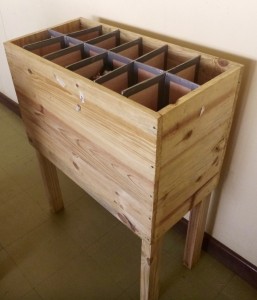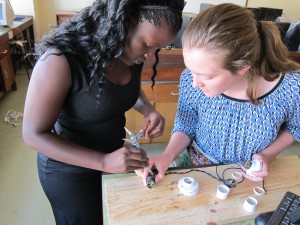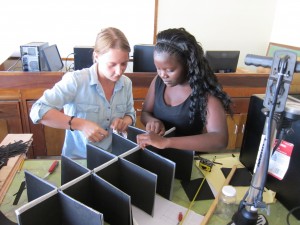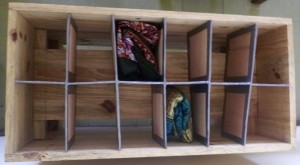At the request of our professors and several doctors at QECH, we have recently begun work on another project – a chitenje warming box for use in the Maternity ward. Common practice at QECH has mothers bring two personal chitenjes with them to the hospital to wrap their new born babies in right after delivery. Then, the mothers would ideally hold the bilayer baby bundle close to their chest to share some of their own body warmth. However, for varied reasons, sometimes this procedure is not followed completely or still does not provide enough warmth for the babies, and the problem of hypothermia persists. We hope that by building a box where chitenjes can be stored and warmed before a baby is delivered, hypothermia can be reduced with the very first hug the baby receives.
Our design is based on a modified design of a previous Rice senior design project that is currently in use at QECH – the Hot Cot. The Hot Cot is a warming box for babies that is made of wood and uses several incandescent light bulbs as a heat source. The beauty of the Hot Cot is that it can be 100% locally sourced and built, is relatively inexpensive, and poses little to no risk of overheating. Our Chitenje Warmer will operate on the same heating principles, but has a modified silhouette to maximize chitenje capacity while minimizing the risk of cross-contamination.
We are very excited for the potential of this project and hope to have a working and tested model that we can give to QECH before we head back to Texas. It’s a hefty goal, but we’ve already finished construction on the first generation prototype this week and just today we’ve received the supplies necessary to begin testing the device.



